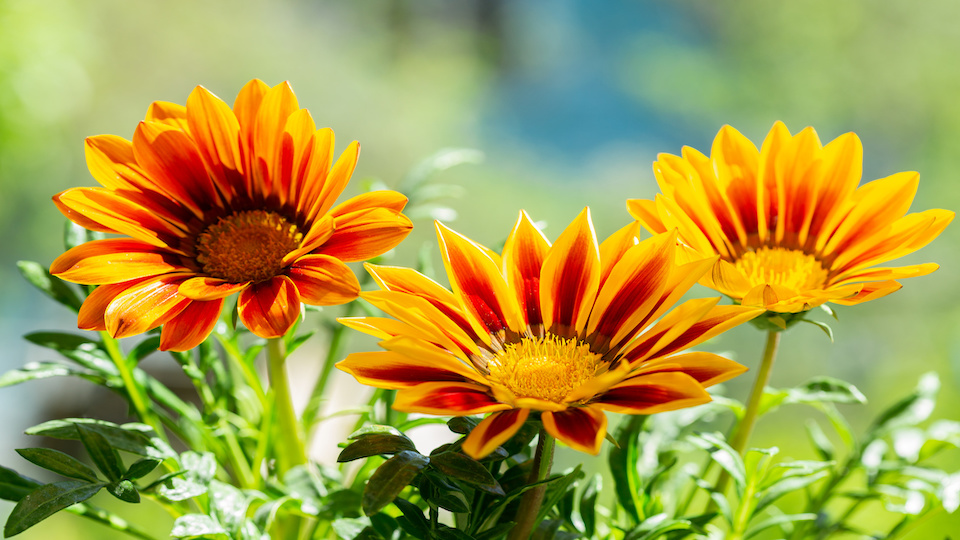If you live in a part of the country that regularly experiences temperatures between 90 and 100 degrees Fahrenheit throughout the summer months, you have good cause to be concerned about your plants in the baking heat. Though plants do need the bright sun and usually thrive in the summer, the blistering intensity of a heat wave combined with less rainfall can often cause serious problems for your garden. Here are 5 ways to protect your garden this summer.
Mulch
Hopefully, you already have mulch on your garden. This step is essential for locking in moisture, protecting root systems, and encouraging healthy bugs and insects. But did you also know that a reflective mulch, such as grass clippings can also keep your plants cool in extreme weather? Direct sunlight at the base of your plant can seriously disrupt the roots and cause wilting and other damage.
Lay a thick layer of mulch around the use of the plant and you’ll not only prevent weeds from growing (thereby reducing backbreaking weeding) but also encourage vigorous plant growth even at the peak of summer. Try natural mulch options such as straw, Alfalfa, grass clippings, leaves, or traditional bark mulch. These materials are usually cheap or free and will help feed your soil as well.
Utilize the shade of larger plants for transplants
Unfortunately, fragile transplants are often victims of the intense heat and drying sun. It can be incredibly disappointing to carefully cultivate little seedlings indoors through the winter and early spring and eagerly plant them once the danger of frost has passed, only to have them claimed by a heat wave in early June. When plants don’t have time to establish a hearty root system, they are vulnerable to many environmental concerns, including summer heat.
A good way to avoid this is to utilize the shade cast by taller, more mature plants. Obviously, your seedlings won’t survive without any sun, so it is crucial to observe your garden for a few days and discover places where your seedlings can still receive partial sun without having to bear the brunt of the heat. Scout out bare spots of soil near plants that will soon be harvested. This way, your transplants have time to get established and be hardy enough to survive direct sunlight before their shade protector is gone.
Shade cloths
Providing shade for your plants is especially essential if you are going to experience a prolonged heat wave or live in a place where temperatures frequently soar above 90 in the summer. String up a shade cloth, assemble a row cover, or use a patio umbrella to protect your most vulnerable plants. Be sure that whatever you use still allows some light to reach your plants, or be prepared to remove the covering each day to give them a dose of Vitamin D. It is also important that the covering doesn’t smother plants, as this can provide the opposite effect and actually trap heat.
Water when it’s cool
There is absolutely no point in watering your plants in the heat of the afternoon. Not only is it dangerous to your health and wellbeing to be in the afternoon sun for extended periods of time, but the water simply evaporates before it even has time to reach the roots of your plants. Water directly at the base of the plant in the early morning when it is still relatively cool outside. This will allow your garden time to soak up the water and give it hydration throughout the hot day. Watering when in the morning can also help prevent heat stress, which occurs when the sun is at its peak, and plant leaves are too brittle to fight off the powerful rays. It is essentially “plant sunburn” and can seriously damage the foliage of your more vulnerable plants.
Choose heat tolerant plants
There’s a difference between having an unusually warm summer, or dealing with a few weeks of intense heat versus living somewhere that is incredibly hot all summer long…every summer. If this is the case, you will have to recognize that you may be restricted on what you can plant. Choose heat tolerant plants that will thrive in your intense environment.
Note on summer gardening:
Remember, it is important to look after yourself too! The summer heat isn’t just dangerous for your plants. Try to avoid gardening in the afternoon when the temperature peaks and be sure to stay hydrated and take frequent breaks indoors when you are performing any sort of manual labor in the summertime or during a heat wave.
Do you know of any other ways to protect your plants during a heat wave? Let us know in the comments below!
-Taylor Ramsey




